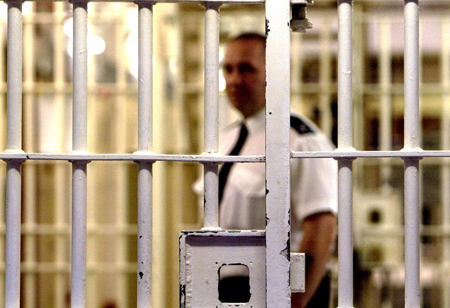THANK YOU FOR SUBSCRIBING
Be first to read the latest tech news, Industry Leader's Insights, and CIO interviews of medium and large enterprises exclusively from Gov CIO Outlook
THANK YOU FOR SUBSCRIBING

By
Government CIO Outlook | Wednesday, January 27, 2021
Stay ahead of the industry with exclusive feature stories on the top companies, expert insights and the latest news delivered straight to your inbox. Subscribe today.
Some programs have switched to a correspondence learning model, mailing inmate students with paper assignments that can be completed and sent back.
FREMONT, CA: Beyond prisons, the coronavirus-forced switch to remote learning has exposed and intensified many glaring gaps that have already been generated in the education system. Driven by gaps between access to the Internet and personal technologies, the digital gap leaves people disconnected, sometimes unable to access the knowledge they need to keep themselves secure, and far less keep up with education or jobs. For years to come, the consequences of this division will reverberate, and people will suffer for it.
But if the transition to remote learning in the real world has been complicated and fraught, the same change has been much more so within jails and prisons. Higher education in prison systems usually includes sending outside volunteers—often graduate students or professors—to prison for additional instructional programming not provided by the prison. These programs also encourage imprisoned students to receive university credit. Perhaps most notably, they establish a bond between people on the outside and people on the inside, knocking down the wall between others and them, even briefly. Access to infrastructure has always been—widely disparate, both within various jail structures and within separate prison facilities.
Teachers have already been compelled to become innovative to continue supplying their students with instructional services. However, they are still worried about setting precedents that may impact their ability to perform in-person programming in the future. Underlying all this is a chilling reality: imprisoned individuals are held in prisons where social distances are sometimes tricky, sanitation and access to health services are lacking, and communities are overwhelmingly susceptible to the infection.
Some programs have switched to a correspondence learning model, mailing inmate students with paper assignments that can be completed and sent back. Others are producing multimedia tutorials and broadcasting them via prison television services. In some cases, programs in online learning facilities (usually by actual computing labs) can use learning management mechanisms to keep lessons running. Student clerks or teaching assistants, who help promote initiatives from within, have taken on new roles to exchange information and facilitate peer-to-peer learning. Some programs communicate with students through telephone or kiosk or tablet-based electronic messaging systems, but such communication typically comes at a charge. Other programs are still exploring options for performing live classes.
Check This Out: Top Education and Learning Analytics Solution Companies
I agree We use cookies on this website to enhance your user experience. By clicking any link on this page you are giving your consent for us to set cookies. More info

However, if you would like to share the information in this article, you may use the link below:
www.govciooutlookapac.com/news/online-classes-in-prisons-why-is-it-hard-nid-1215.html



